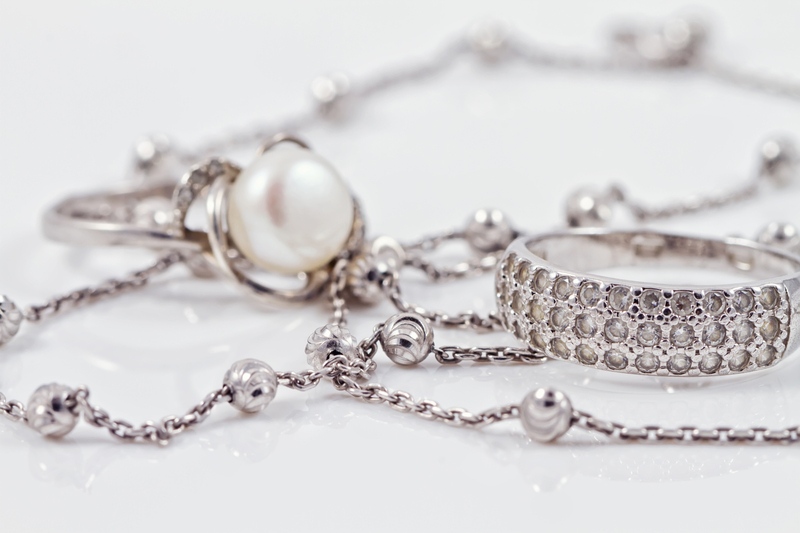Guidelines for Moving Antique Collectibles
Posted on 02/10/2025
Guidelines for Moving Antique Collectibles
Antique collectibles hold not only monetary value but also sentimental significance for many owners. Whether you're relocating to a new home or simply rearranging your space, moving these precious items requires special care to avoid damage. This article aims to provide a comprehensive guide on how to move antique collectibles safely.
Understanding Your Antique Collectibles
Before you start packing, it's essential to understand what kind of items you have. Antiques can range from fragile porcelain figurines to heavy wooden furniture. Each type requires a different approach to ensure safe transport.
- Porcelain and Glass: Extremely fragile and prone to chipping and cracking.
- Wooden Furniture: Susceptible to scratches, dents, and water damage.
- Textiles: Includes rugs, tapestries, and vintage clothing, all of which can be damaged by moisture and pests.
By categorizing your antiques, you can better plan how to pack and move each type of item.

Preparing for the Move
Preparation is crucial when it comes to moving antique collectibles. Here are some steps to ensure you're ready:
Document Everything
Take high-quality photographs of your items from multiple angles. This not only helps in keeping a record but also serves as evidence for insurance purposes should anything go wrong.
Research Moving Companies
Not all moving companies specialize in handling antiques. Research and choose a moving company that has experience in transporting valuable and delicate items.
Get Insurance
Standard moving insurance may not cover high-value antiques. Look into specialized insurance policies that cover collectibles and antiques to protect your investment.
Packing Your Antique Collectibles
Packing is perhaps the most critical part of the moving process. Here, we cover how to pack different types of antique items effectively.
Porcelain and Glass
Use bubble wrap and packing peanuts to cushion these fragile items. Wrap each piece individually and place them in a sturdy box, ensuring they are packed snugly.
Wooden Furniture
Disassemble furniture if possible, and wrap each part in moving blankets. Use corner protectors for added safety and avoid using plastic wrap directly on wood, as it can trap moisture and cause damage.
Textiles
Place textiles in acid-free tissue paper and store them in breathable garment bags or boxes. Avoid plastic covers, which can trap moisture and lead to mildew.
Labeling and Organizing
Proper labeling and organization can save you a lot of trouble when you're unpacking.
Label Fragile Items
Clearly label boxes containing fragile items to ensure they are handled with care. Use stickers or permanent markers to make these labels visible.
Inventory List
Create an inventory list of all the antiques being moved. This not only helps you keep track of your items but also assists in case of any discrepancies during the move.
Loading and Transport
The way your antique collectibles are loaded and transported can make a significant difference in their safety.
Loading Techniques
Heavy items should be loaded first, followed by lighter and more fragile items. Ensure boxes and furniture are secured to prevent shifting during transport.
Climate Control
Antiques are sensitive to temperature and humidity changes. If possible, use a climate-controlled moving truck to maintain a stable environment.
Professional Help
For particularly valuable or fragile items, it might be worth hiring professional packers who specialize in antiques.
Unpacking and Setting Up
Unpacking requires as much care as packing. Follow these steps to ensure a smooth transition.
Check for Damage
Before unpacking, inspect each box for visible damage. Document any issues and take photographs for insurance claims if necessary.
Unpack Gradually
Avoid rushing the unpacking process. Carefully remove items and inspect them for any damage that might have occurred during transit.
Set Up Properly
Once unpacked, ensure that your antique items are set up in a stable and safe environment. Use furniture pads to protect wooden pieces and avoid placing textiles in direct sunlight.

Post-Move Maintenance
Your job isn't done once the move is complete; maintaining your antiques is equally important.
Regular Inspections
Conduct regular inspections to check for signs of damage or wear. Early detection can prevent minor issues from becoming major problems.
Climate Control
Maintain a stable environment by controlling temperature and humidity levels in the room where your antiques are stored.
Cleaning and Preservation
Regular cleaning using appropriate materials will help in preserving the items. Avoid harsh chemicals and make sure to follow specific guidelines for each type of material.
Conclusion
Moving antique collectibles is a task that requires meticulous planning and execution. From understanding the nature of your items to ensuring they are packed, transported, and unpacked safely, following these guidelines can help protect your valuable possessions. Taking extra steps like documenting, getting specialized insurance, and hiring professionals can add layers of security to the entire process. With careful attention, you can ensure that your antique collectibles arrive at their new location in pristine condition, ready to be admired and cherished for years to come.







